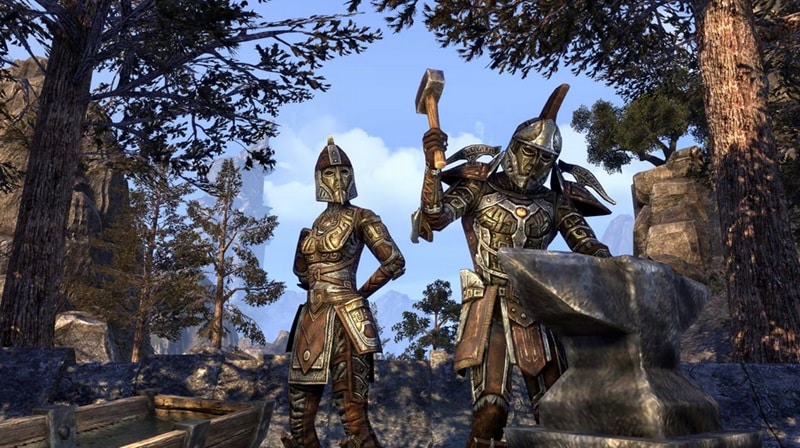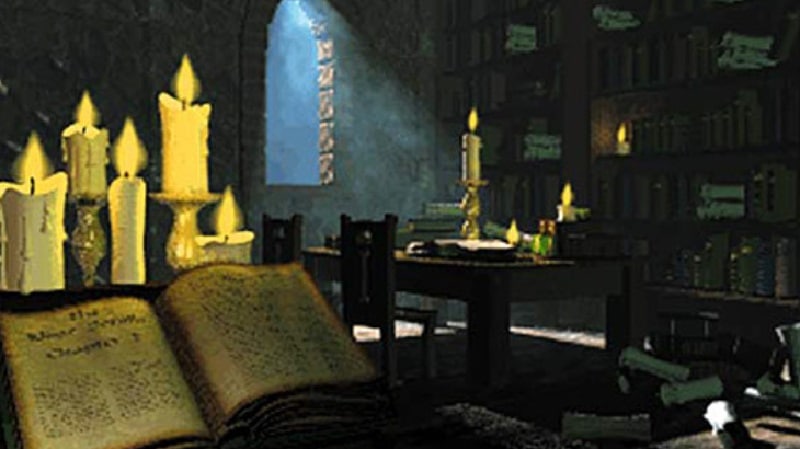Bethesda Softworks has created many classic fantasy RPGs for its expansive Elder Scrolls franchise for over thirty years. Ever since the first game, Arena, these games have continually evolved and refined their vision. However, much of what makes the series what it is comes from the second game, Daggerfall. Set in the kingdom of High Rock, this story follows a hero as they must investigate a vast, nation-spanning conspiracy involving an ancient magical titan known as the “Numidium.” Here is a breakdown of how Daggerfall laid some of the most important groundwork for the massive Elder Scrolls series with its massive contributions.
The Early Vision of Elder Scrolls
As with many big video game franchises, the early installments differed significantly from modern incarnations. At this point, not long after the release of the original Arena, The Elder Scrolls franchise had yet to set itself apart from other fantasy PC games. Its pixelated aesthetic was indistinguishable from the contemporary Baldur’s Gate series.
The game created its massive world using one of the earliest 3D engines in gaming, Bethesda’s XnGine. However, this was done by using 2D sprites in a 3D world. While obvious to modern gamers, this was a clever workaround. Fortunately, fans of old-school gaming will likely enjoy the game’s live-action cutscenes and digitized music.
Daggerfall’s Massive Map

Of course, the most infamous element of Daggerfall is the sheer scale of its map. Every few years, gamers compare the largest overworlds in the medium. For example, Skyrim’s map is barely the size of one province from Elden Ring. However, even three decades later, this game still breaks records. The map has 15,000 locations and is 161,600 square kilometers in size, roughly the size of the United Kingdom.
Despite its grand size, the game wasn’t entirely manually created. Most of the map was procedurally generated, so it is repeated and devoid of original sights. In the modern series, Bethesda’s talented designers and artists meticulously plan every stone and tree for their maps. While impressive for its time, this game shows the common pitfalls of quantity over quality.
The Gameplay
At this point, The Elder Scrolls still held to its roots in Dungeons and Dragons and other tabletop games. This is most apparent within the opening character creation. Players choose not only their race but also their backstory and starting items, and they put dozens of points into specified stats. Compared to the more streamlined later games, many were likely overwhelmed. While the game is an open-world dungeon crawler, first and foremost, its vast open world offers many joinable guilds and side quests. However, as with the rest of the game, these elements are far more rudimentary and simplistic, lacking the same plotlines each guild came with in later games.
The Lore and Story
While the first game, Arena, was a more straightforward story about crossing the continent to rebuild a magic staff, Daggerfall has a surprisingly deep story for its time. As usual, the player is a prisoner sent by the Emperor to investigate the province. The story combines political intrigue regarding an assassination plot for the king along with original fantasy elements, such as attempting to revive the brass mecha Numidium. Perhaps the biggest contribution made by Daggerfall was the introduction of the Daedric Princes, the pantheon of gods overseeing Tamriel. However, they had significantly different dominions, such as Azura representing vanity and Meridia representing greed.
Furthermore, several guilds, such as the Mage’s Guild and Dark Brotherhood, lacked the lore from later games and were simple quest distributors. Interestingly, this was the only game in the Elder Scrolls franchise to feature different endings for the main questline. Each carries status quo-altering implications for Tamriel, such as the Numidium demolishing the lands. Ultimately, the writers resolved the issue using an outright time warp called a “Dragon Break.” As demonstrated by the later Dragon Age series, maintaining player choices across several games can be taxing.
The Legend Continues
In conclusion, The Elder Scrolls: Daggerfall was an excellent example of an “old school” RPG, laying the foundation for one of the greatest fantasy franchises ever. It gave both an impressively vast map and intriguing lore that still catches the eyes of fans today. While many game elements were impressive for their time, others are outdated by today’s standards. Fortunately, Bethesda, located in Rockville, Maryland, released the game and its predecessor for free on Steam, so anyone can go back to the roots of this series.
For More Great Content
Craving top-tier content that covers it all? From electrifying sports highlights and insider entertainment news to expert gaming tips and sharp betting advice, we’ve got you covered. Dive into our curated articles to stay ahead of the game with the latest sports action, uncover the hottest trends in entertainment, and get the lowdown on gaming strategies that could level up your play. Plus, our betting advice will sharpen your edge and boost your chances of winning big.
Whether you’re looking to stay updated or gain a competitive edge, our content is your go-to source for all things exciting and relevant. Don’t miss out—explore now and power up your knowledge! Follow us on Twitter/X @TotalApexSports, to stay informed.


